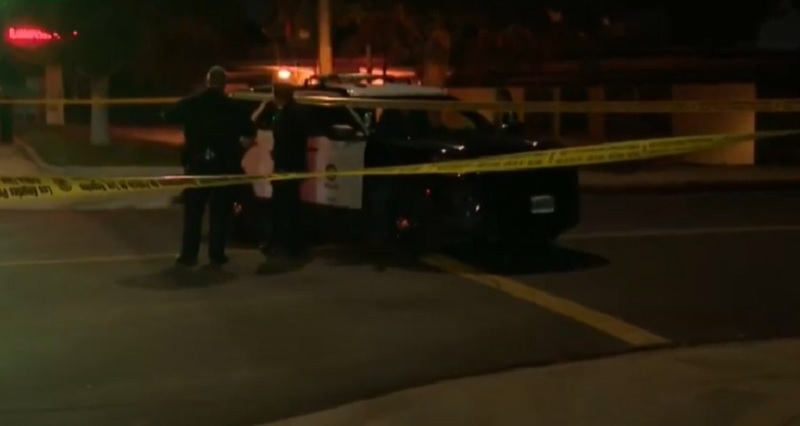
An alert campus police officer noticed a clear 2-liter bottle containing an unknown liquid in the stadium parking lot filled with cars from attendees of a football game. The area was the primary route for pedestrians leaving the game that was ending just a short time after the officer made his observation. Immediately he established a wide perimeter, called for additional help for crowd control, and got EMS and fire equipment staged at a safe and strategic place. Subsequent investigation determined that a student had been experimenting with this type of explosive and had simply disposed of it by leaving it there. However, its placement and timing appeared to be designed for potential injury.
No matter how benign the device might have been (it was detonated with no injury or property damage in consultation with an explosives expert in a nearby city), the amount of resources properly devoted to the incident was costly. Investigators also considered whether this might be a diversion for the commission of another crime, or whether it might have been a test run to determine the response capability of emergency crews.
Explosives can be used in criminal events for murder, property damage, terrorism, extortion, or as a diversion. Motives range from revenge to mischief. While the federal Bureau of Alcohol, Tobacco, Firearms and Explosives (ATF) has resources to respond to bombs and threats, the challenge more often belongs to local law enforcement to recognize suspicious devices, assess bomb threats, and prevent death and injury.
Television and movies provide inaccurate stereotypes of what bombs look like and how they work. Law enforcement must work to educate schools and businesses on the best way to respond to a bomb threat or a suspected explosive device. Red sticks of dynamite taped together with an alarm clock attached, or a box with a digital countdown in red characters that beep in the last few seconds are not what shows up at bomb scenes.
A destructive explosive device can look like or be contained in very ordinary packages. Backpacks, manilla envelopes, or metal tubes. The infamous Unabomber, Theodore Kaczynski, killed three persons and injured dozens more over twenty years. He set or mailed his devices, some of which looked like an ordinary package delivered to his victim. The Boston Marathon bombers constructed their deadly devices from a pressure cooker normally used in the kitchen, killing three and injuring dozens.
Plastic bottle bombs that rely on chemical reactions of easily accessible household chemicals look like so much litter but can cause loss of fingers and other injuries when handled. Oklahoma City bombing suspect Timothy McVeigh left a truck with a mixture of fertilizer and diesel fuel in the parking lot of the Murrah Federal building leaving 168 people dead and nearly 700 injured.
Plans for improvised explosive devices (IEDs) like those used as roadside bombs against U.S. troops in Iraq and Afghanistan can be from internet sources and are composed of a variety of materials. Many recent cases, such as the Colorado theater shooter during a midnight showing of The Dark Knight Rises Batman movie, involve not only an active shooter but booby-trapped crime scenes. Investigators searching the apartment of James Holmes, who opened fire in the theatre and killed twelve, found that he had set explosives for responding officers.
Another disruption in public places occurs when a bomb threat is made, whether a dangerous device actually exists or not. In addition to pranks, a threat may be designed to keep first responders busy while another crime is being committed across town, or to cause economic harm from the disruption of operations.
Police responding to reports of suspicious devices and bomb threats will face criticism for over-reacting or for under-reacting. Officers may find suspicious devices that turn out to be a misplaced backpack or part of a geocaching game where participants locate objects from clues and GPS devices. Evacuating large areas, stopping traffic, and marshaling numerous first responders is a major endeavor. Few agencies have immediate availability of explosive technicians, bomb containers, or robots used to inspect devices. Long waits for specialized units are typical and, to those inconvenienced, annoying.
One part of public education is training to avoid the temptation to evacuate buildings when there is a bomb threat. Protecting in place is usually best, not because the bomb threat is likely a hoax, but because building occupants are likely safer where they are than if they move about or exit the building.
The image of major explosions is frightening, but most homemade devices, while very destructive, will not cause building collapse. Many IEDs are designed to throw out shrapnel and are constructed with nails, glass, or BBs to cause injury to people. These devices are likely to be placed in areas of public access, especially entrance and exits. Given the nature and intent of these devices, an evaluation of the threat and search of the area by persons familiar with what objects may be out of place should be made before deciding if moving from the building is safe.
Citizens must report any suspicious item that appears out of place and located where it could do the most damage, especially around schools and government buildings. Responding police and fire personnel can help evaluate the potential danger and coordinate the safest response.